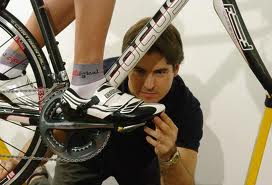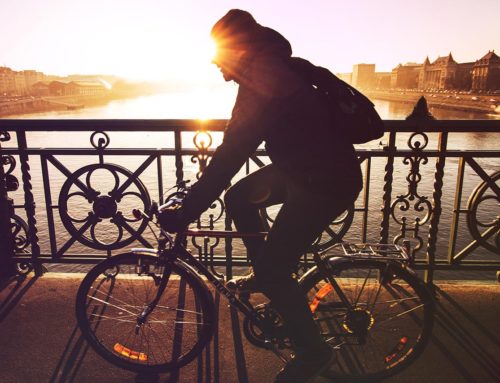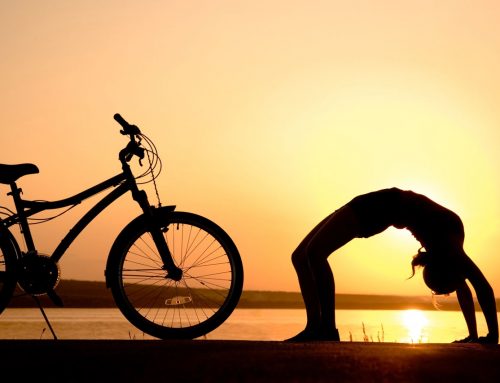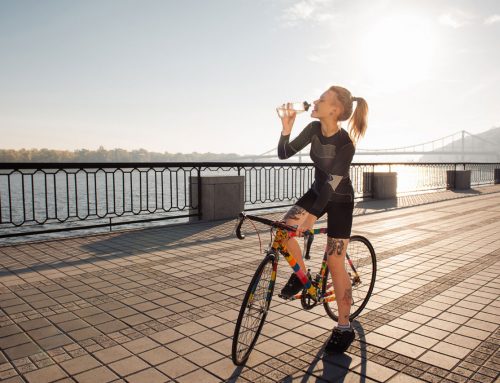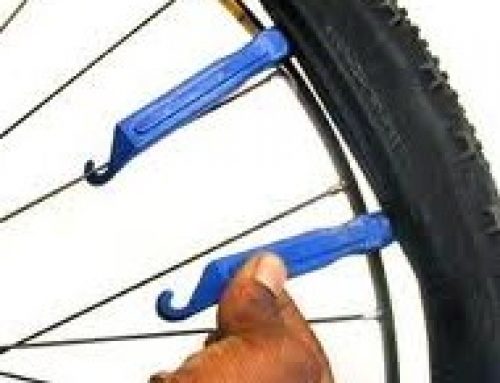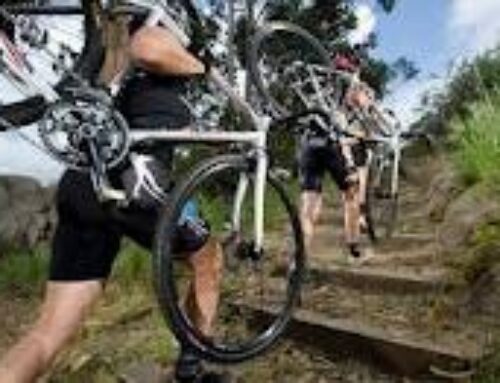Bike fitting for better performance? When it comes to bicycles, one size doesn’t fit all. In fact, one size fits some and then each bike must be further tweaked to fit the individual. Even the lightest, fastest bicycle is useless if it doesn’t fit the intended rider. So many people ignore their bike fit until they experience discomfort, pain or injury. A reputable bike shop should provide basic bike fitting services with the purchase of a new bike. Not sure how your set-up fares? Try these tips for a basic set-up.
Saddle height
If you have an indoor trainer, mount the bike and begin pedalling. Or position yourself in a doorway and backpedal. After a few spins, enlist a friend to look at the angle of your legs. They should bend 80 to 90% or if you’re able to measure the angle, you should have 25 to 35 degrees of knee flexion, as measured at the actual knee, not the angle between the thigh and calf muscles. A higher saddle height is more aggressive and produces more power, but also places greater strain on the knee. If the back of your knees hurt, try lowering the saddle by a few millimetres. A lower saddle height, on the other hand, is better for spinning, but places greater stress on the knees. If you have pain in the front of the patella, try raising your bicycle seat.
Saddle position
Saddles or a bike seat can move in many directions, up, down, back and forward. Begin by using a level to ensure your saddle is parallel to the ground. Now set up the fore and aft positions. Have a friend use a plumb line (a nut tied to a piece of string works well) and stop your foot in the 3 o’clock position. Your friend should place the end of the string directly on the side of your knee and let the plumb line hang down to your foot. When properly set up, the plumb line should intersect with the ball of your foot.
Handlebars
To avoid neck, shoulder and hand pain, check the reach to the handlebars. A comfortable reach should keep hands wide enough so that the chest cavity is open and arms are straight with a slight bend in the elbow. You shouldn’t feel uncomfortably stretched out. If you are, swap to a shorter stem or one that is more upright. If you’re unsure of your position, take a video or photo of yourself riding to check that your upper body is relaxed.
Other bike fitting considerations
When you purchase a new bike, be sure to check the stand over height. You should have at least an inch between your body and the top tube.
Invest in the frame first and components second. Components can always be swapped out down the line, but you’re stuck with the bike’s frame size. Do your research first and be sure it’s the right one.
These guidelines aren’t hard and fast, as some people find that a tilted saddle or wide handlebars provide the perfect fit. Bicycle fit is dynamic, so periodically check your set-up for changes. If you’re having trouble with clipless pedals, experiencing pain or discomfort, it’s always best to seek out a professional for a proper bike fitting.
Need more? Here’s a great article from Cycling Weekly Magazine.
